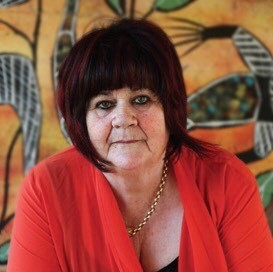“While one might ask why the ACT government has chosen to rely on ABS data for internal purposes but point to a much narrower set of data for public purposes, I think we all know the answer,” says JULIE TONGS.
IN the “Portfolio Brief: Minister for Police and Emergency Services, 2020” at page 13, the incoming Minister for Corrective Services was advised by his directorate that: “Re-imprisonment rates (recidivism) are higher than 90 per cent for Aboriginal and Torres Strait Islander detainees at the AMC, compared to 75 per cent for non-indigenous detainees.”

The portfolio brief, referred to above, is in the public domain and readily available.
Winnunga Nimmityjah Aboriginal Health and Community Services has from time to time relied, in good faith, on the data referred to above and published by the ACT government.
It is acknowledged that the brief is now over a year old, however, the latest Australian Bureau of Statistics (ABS) report on recidivism rates across the nation, “Prisoners in Australia, 2021”, released on December 9, reveals that the Aboriginal and Torres Strait Islander recidivism rate in the ACT is 94 per cent and the highest in Australia.
It was therefore surprising, to say the least, to hear the acting commissioner for corrections Ray Johnson recently claim on ABC radio that the Aboriginal recidivism rate in the ACT is 40 per cent.
Because of the yawning difference between the rate published by the ACT government at the end of 2020 (over 90 per cent), which was recently confirmed by the ABS, and the 40 per cent rate claimed by Mr Johnson, I wrote to ACT Corrective Services seeking clarification on the issue.
In response the Directorate advised that:
“The latest data on recidivism is available in the ‘2022 Report on Government Services’.
“The ACT had 38.5 per cent of detainees (released in 2018-19) returning to prison (within two years from their release) against 45.2 per cent nationally. The return rate for Aboriginal and Torres Strait Islander detainees was 44 per cent compared to 56.8 per cent nationwide.”
There you have it. A response that recalls the quaint old expression “Lies, Damned Lies and Statistics”. If a particular set of data is worrisome, then adopt an alternative data set that tells a different story. In this case, for example, the ACT government relies on data that relates only to detainees who were re-imprisoned within two years of release and completely ignores the rest.
The information produced below, based on the latest ABS data on recidivism rates of all detainees and not just those re-imprisoned within two years of release, tells a very different story.
It is interesting that the “Portfolio Brief” prepared for the minister, which I refer to above, and which advises that the re-imprisonment rate is higher than 90 per cent was clearly based on ABS data. While one might ask why the ACT government has chosen to rely on ABS data for internal purposes but point to a much narrower set of data for public purposes, I think we all know the answer.
The ABS report also reveals, to our continuing shame, that both the crude and age standardised incarceration rates of Aboriginal and Torres Strait Islander peoples in the ACT are also the highest in the nation. The 2021 rate ratios are 21 (crude rate) and 19.5 (age standardised rate). In simple terms, an Aboriginal person in the ACT was, in 2021, 21 times more likely to be sent to prison than a non-Aboriginal person.
Concerningly, the increase in the rate of imprisonment of Aboriginal peoples in the ACT over the last decade (while Greens leader Shane Rattenbury was the responsible minister) has also been the highest in Australia.
The ABS reports that in 2011, an Aboriginal person in the ACT was 11.6 times more likely to be imprisoned than a non-Aboriginal person while the national average was 14.4 times.
Under Minister Rattenbury, the likelihood of an Aborginal person being incarcerated relative to a non-indigenous person has increased by 9.4 times, while nationally the likelihood of imprisonment increased by 1.4 times.
As for recidivism the ABS has, as mentioned above, published the proportion of all prisoners in each year who had been previously imprisoned and not just those who were re-imprisoned within two years of release.
The ABS report reveals that the ACT, with an indigenous recidivism rate of 94 per cent, had as of December, again to our great shame, the highest recidivism rate in Australia. The recidivism rate in the ACT for non-indigenous prisoners is 74 per cent, which is also the highest in Australia.
Unfortunately, that is not all. The ABS has also tracked the change in the crude imprisonment rate over the last 10 years and it is no surprise to find that the crude imprisonment rate of Aboriginal and Torres Strait Islander peoples in the ACT increased by 70 per cent, the second highest rate of increase in Australia, and more than twice as high as the Australian average of 31 per cent. Remarkably the incarceration rate for non-indigenous people in the ACT decreased, over the same period, by 6 per cent. What does that tell us?
Corrective Services did also helpfully advise that, as of April 26, Aboriginal and Torres Strait Islander peoples, who comprise 1.9 per cent of the ACT population, constituted 27 per cent of the ACT prison population.
We really do need a Royal Commission into these issues.
Julie Tongs is the CEO of Winnunga Nimmityjah Aboriginal Health and Community Services.
Who can be trusted?
In a world of spin and confusion, there’s never been a more important time to support independent journalism in Canberra.
If you trust our work online and want to enforce the power of independent voices, I invite you to make a small contribution.
Every dollar of support is invested back into our journalism to help keep citynews.com.au strong and free.
Thank you,
Ian Meikle, editor





Leave a Reply